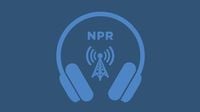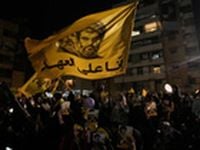In the Lebanese border village of Houla, mornings begin with the unnerving sight of Israeli rifles pointed from less than 700 meters away. For residents like 55-year-old Fidaa Fawaz, the daily reality is a stark reminder of a war that, though officially ended two years ago, continues to shape every aspect of life in southern Lebanon. "Half my house is gone," Fawaz told Xinhua. "We can't walk far -- there are landmines, and Israeli soldiers point their guns at us without warning. Houla used to be vibrant; now it's silent and anxious."
The transformation of Lebanon’s southern border since the conflict with Israel is jarring. According to official data cited by Xinhua, more than 30 towns and villages were almost completely destroyed, forcing about 100,000 residents to flee northward. The devastation is visible from the first stretch of road south of Marjayoun, where asphalt gives way to gravel and mud, and where shell fragments and bulldozed barriers have become part of the landscape. Houses stand in ruins—some erased entirely, others left as hollow shells.
A World Bank report released in March 2025 estimated that the year-long conflict between Hezbollah and Israel destroyed around 45,000 housing units and generated between 20 and 35 million tons of rubble across southern Lebanon. The cost of recovery and reconstruction is steep, with the report pegging it at around $11 billion.
Israeli military control now extends over a border strip of roughly 850 square kilometers, stretching from Shebaa Farms in the east to Naqoura in the west. Lebanese military sources told Xinhua that Israeli forces have drawn new "red lines" around multiple villages, barring residents from approaching or crossing certain zones. Main roads connecting communities have been destroyed, deepening the isolation of places like Kafr Kila, Adaisseh, Houla, Markaba, Rmeish, and Mays al-Jabal. "The Israeli military presence on five strategic hills, along with other occupied areas, has entirely changed the border map," a Lebanese officer explained.
In Kafr Kila, 30-year-old Adel Sheet described life as "almost impossible." There is no electricity, and water arrives by tanker at prices most families cannot afford. "Agriculture, which was the region's lifeline, has nearly vanished. Fields were destroyed, and large tracts of land were bulldozed," Sheet said. Markets are shuttered, jobs have disappeared, and young people are leaving for the cities. Unemployment and poverty have become the new norm.
Further west, in Aita al-Shaab, local estimates put destruction at 85 percent. Layla Choukeir, 22, surveyed the remains of her home and confessed her uncertainty about the future. "I was born here, but I don't know if I'll stay. There's no work, no school, no electricity. We live as if cut off from the world. Even the roads that connected us to other villages have been bulldozed. We feel trapped. My heart belongs here, but my future may be elsewhere."
The impact of the war stretches far beyond the border. Cities like Tyre, Sidon, and Nabatieh have absorbed thousands of displaced families, straining an already fragile economy. According to Internal Security Forces data, schools are overcrowded with displaced students, and hospitals are struggling to serve rising numbers of patients with limited resources.
Despite a U.S.- and French-brokered ceasefire that took effect on November 27, 2024, ending months of cross-border clashes tied to the Gaza war, Israeli airstrikes and demolitions have continued. NPR reported that in the six months leading up to July 2025, U.N. peacekeepers recorded 440 Israeli attacks into Lebanon, compared to just one by Hezbollah into Israel. Entire neighborhoods have been erased, and more than 300 people have been killed since the ceasefire.
Jane Arraf of NPR visited Houla and reported that Israeli soldiers occupied the village after the ceasefire, defacing a cemetery monument and destroying homes. Retired schoolteacher Abdul Aziz Sharim recounted the loss: "This was my house," he said, standing before the rubble of his three-story home. He lamented the destruction of his library—about 1,000 books on philosophy, science, and history. Agriculture, once a source of pride and sustenance, has been devastated. "I used to harvest 200 pounds of pomegranates every season and sell the juice. But almost all the trees have been destroyed."
Residents like Miriam Masrani voiced deep uncertainty about their future. "We are lost. We need to know what will happen. Will our land be returned to us, or will they take it away from us? Will we be displaced again?" she asked NPR. The United States has floated the idea of turning these villages into a Lebanese economic zone, purportedly to help Israel feel secure, but for locals, the prospect of rebuilding remains distant while Israeli military actions persist. "He and his neighbors say they won't give up their homes, but neither can they rebuild while Israel is launching attacks," NPR reported.
Israeli Prime Minister Benjamin Netanyahu, in remarks on October 7, 2025, reiterated the Israeli army’s commitment to continue its operation along Lebanon’s border to destroy suspected Hezbollah tunnels “as long as necessary.” Netanyahu alleged that the tunnels were intended to "send terrorists into northern Israel" and framed the operation as part of a broader defensive deployment. He also emphasized actions against Iran's "terrorist activities" in Lebanon and Syria, and announced plans to seek an urgent U.N. Security Council meeting to address Hezbollah's "aggression," according to Naharnet.
Meanwhile, an official from the so-called Axis of Resistance, which includes Hezbollah, told Naharnet that Hezbollah fighters are "on high alert to confront any possible Israeli aggression." The group’s readiness underscores the persistent volatility along the border.
The violence has not abated. Between October 6 and October 8, 2025, Israeli attacks killed four people in Lebanon within a 48-hour span, according to The National. These attacks are part of the ongoing military campaign in southern Lebanon, contributing to the continuing instability and humanitarian crisis in the region.
On October 8, 2025, Lebanese President Joseph Aoun again called for Israel to withdraw from occupied Lebanese territories, warning that without such a move, "the situation will remain unstable, and the army's plan to ensure that weapons are held exclusively by legitimate security forces will face serious obstacles," as reported by Xinhua. The president’s remarks highlight the political impasse and the formidable challenges facing any prospect of real peace or recovery.
In the midst of all this, ordinary Lebanese families are left in limbo—unable to return, unable to rebuild, and unsure if the land they call home will ever be theirs again. The scars of war, both physical and psychological, are etched into the landscape and the lives of those who remain. For now, southern Lebanon’s future remains suspended between hope and uncertainty, as the world watches and waits for a resolution that seems as elusive as ever.

